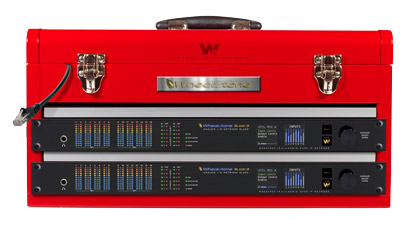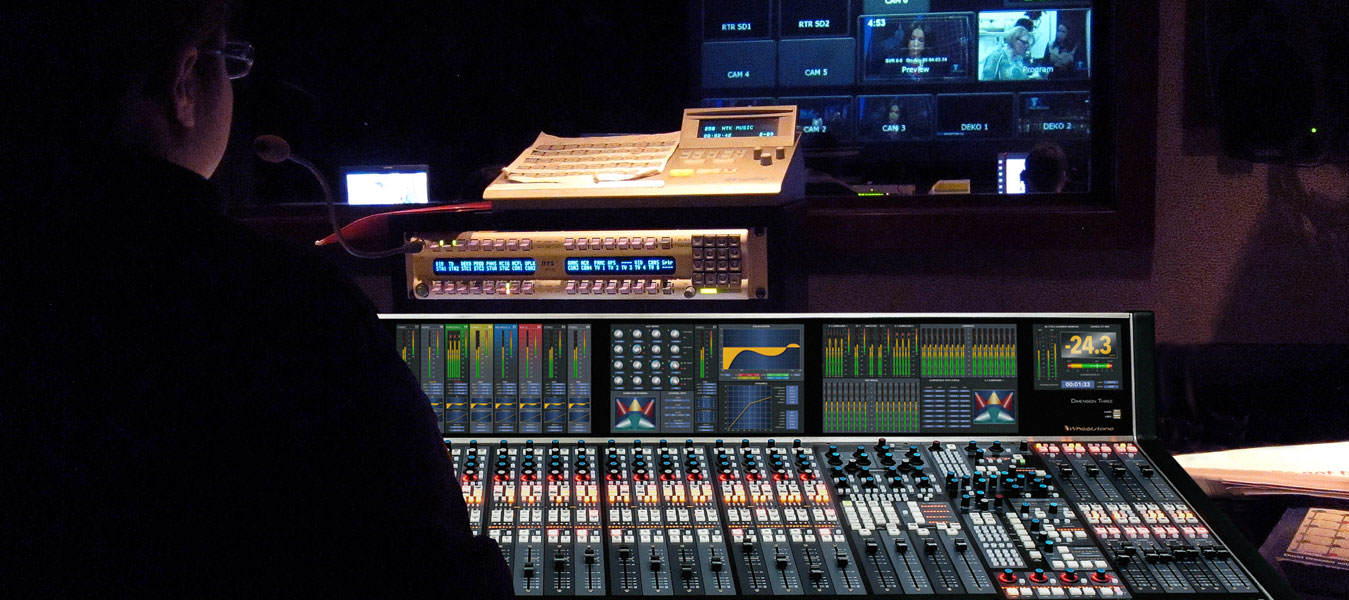
What Is WheatNet-IP?
WheatNet-IP is an audio services network that utilizes Internet Protocol to enable audio to be intelligently distributed to devices across scaleable networks. It enables all audio sources to be available to all devices (such as mixing consoles, control surfaces, software controllers, automation devices, etc) and controlled from any and all devices. WheatNet-IP is AES67 compatible, yet is unique in that it represents an entire end-to-end solution, complete with audio transport, full control, and a toolset to enable exceptionally intelligent deployment and operation.
Andy Calvanese Discusses WheatNet-IP for Television
Wheatstone's VP/Technology, Andy Calvanese, discusses some of the advantages of the seamless, built-in control layer of the WheatNet-IP audio-over-IP network when used in television applications.
Three Things: Complete Audio Toolkit, Integrated Control Layer, & Distributed Intelligent Network
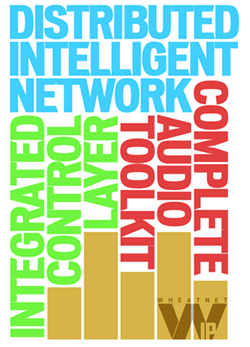
WheatNet-IP is more than just an IP network that routes audio within a TV facility. It is a full system that combines a complete audio tool kit, an integrated control layer, and a distributed intelligent network that takes full advantage of IP audio.
By combining these three components seamlessly into one system, we can deliver the following:
- A distributed network of intelligent I/O devices to gather and process audio throughout your facility
- Control, via both hardware GPI and software logic ports, that can be extended throughout the plant as well
- Rapid route changes via both salvos and presets to instantly change audio, mic control, and tallies between sets
- A suite of software apps and third party devices that all communicate via the common gigabit IP interface
- True plug 'n play scalabilty - devices are easily added to the IP network
- Triggered crosspoints to create routable IFB throughout the facility
Just about any complication in post or live production is manageable using the highly routable features of this broadcast-proven IP audio routing and control system.
IP Audio Networking...It’s All in There
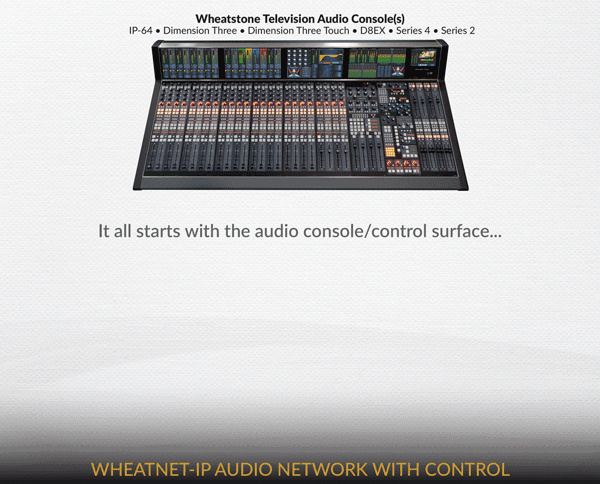
1. WheatNet-IP Audio Toolkit
WheatNet-IP is made up of BLADEs that are essentially intelligent IP interface nodes. Each BLADE has advanced audio resources, which are available at every IP node/connection point in the WheatNet-IP network.
Here is a partial list of mixing and audio processing resources that are part of our audio toolkit. These are resources that every broadcast engineer knows and needs:
- Mix minus creation/IFB creation
- 5.1 processing
- Salvo/Macro creation
- HD-SDI dembedder BLADE
- Two stereo 8x2 utility mixers
- Auto mono summing/Signal Splitting
- Stereo in/out balance control
- Stereo Multiband Processor
- Embedded audio playback (optional)
- Universal logic GPIO ports
- MADI BLADE
- Gain control on every input and output
- Programmable salvos/macros
- Control interace to third-party gear
- Mic preamp BLADE
2. WheatNet-IP Integrated Control Layer

We built in a wide variety of ways to control and automate audio.
With WheatNet-IP, audio is routed in tandem with full system control. This can save you time and effort by having these functions already integrated into the system.
Each resource in the audio toolkit can be controlled by any function in our control layer. Hundreds of unique audio activities can be created and managed.
- Live access all to all sources
- Remote command activation
- Logic control
- Audio routing
- Associated connections
- Preset storage
- Audio and control routing matrix
- Source and destination control
- Routable audio control. Re-route feeds, remotely turn mics ON/OFF, mix any and all signal formats, and set levels and EQ from the mixing console or anywhere in the network.
- Can be used to talk to talent over your IP network. Any WheatNet-IP BLADE access unit that routes audio also can provide the IFB pathway, whether it’s on location or in the studio.
- Automate salvos using associated control. Do multiple switching events based on a single crosspoint connection status.
- Source aliases. Personalize sources to accommodate individual board ops. If you want to label a microphone for weatherman “Bob” in the morning news segment and for show host “Sue” in the afternoon, you can do it.
- Routable audio processing. Spot process satellite feeds, headphone audio, and web streams. WheatNet-IP has filtering, EQ and compression on each BLADE I/O access unit.
- Advanced routing. Move audio and control from cameras, VTRs, or another router systems around the studio on standard CAT5e or CAT6 infrastructure.
- Smart associated connections. Easily change connections between locations and studios. When the main talent mic moves to a new venue, for example, the other associated mics for a show or newscast follow, complete with their unique settings.
- Mono summing. WheatNet-IP automatically mono sums and level matches stereo feeds, so you don’t have to.
- Flexible workflow. Switch studios, reconfigure mixing consoles for multiple purposes, and even change audio processing settings automatically when, say, a certain mic turns on. It’s all in the WheatNet-IP.
3. WheatNet-IP is a Distributed Intelligent Network
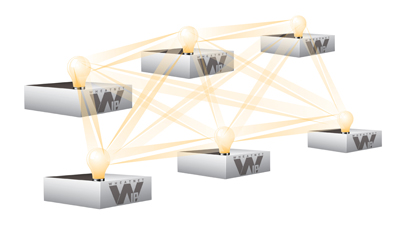
Most IP Audio Networks have their network intelligence centralized in a console, network card, computer, or processing unit.
With WheatNet-IP, all network intelligence is stored in every BLADE and is always available to the entire system. This advanced design gives us unique abilities.
- Every BLADE is a point of redundancy, storing all control functions for the network. As such, each one can control the configuration of the entire network.
- Adding a new location to your network is plug and play. Because network BLADEs talk to each other, they can configure new BLADEs into their group.
- System Expansion is simple because adding new BLADEs automatically adds more network intelligence, more control capability and more audio processing / mixing resources.
- AES67 compatible
- All activities can be initiated or controlled from any point on the network or remotely.
- Common platform for resource sharing. Share VTRs, mics and mixing consoles across one common IP platform, whether for live broadcast or post-production.
- No soundcards needed. Listen to any crosspoint in the network and move audio around the studio, without a single soundcard.
- Plug-and-play network expansion. Add BLADEs, consoles or network features any time. No need to assign IP addresses or allocate bandwidth.
- Based on native IP, for directly transferring multiple stereo channels from the audio workstation to the console with no A/D/A conversion required.
- Direct connectivity to automation. Talks IP to all of the commonly used production automation systems. No serial data conversions needed.
- 24/7/365 reliability. Each amazing BLADE in the WheatNet-IP network is self-aware, and can reconfigure itself in an emergency. In fact, each BLADE in the network can recover settings for your entire studio operation!
- Easily changeable. Reuse studios for multiple purposes. Instantly change mic feeds, IFB connections and reset processing settings, either on the fly or using presets.
- Audio and control combined. Logic controls follow audio on the same cable. Pick up a mic feed and the processing settings for that mic in Studio A same as in Studio B.
- Based on standard IP architecture. Leverage existing Ethernet IP equipment such as Cisco switches for affordability now and scalability later.
- Audio, control and administrative data included on one single cable – replacing what used to be separate networks and cabling for each.
- Labor friendly. The same company that pulls cable for the phone system and office network can also pull the cable for your audio network, cutting down on installation and maintenance costs
- Easily configurable. Just plug I/O BLADEs into your managed gigabit Ethernet switch and let WheatNet-IP do the rest. Add codecs, processors and controllers or change I/Os in a snap.
- Distributed topology. All I/O access units share the workload, so there is no single point of failure.
- Centralized monitoring, maintenance and security. WheatNet-IP gives you all the tools for securing controls, monitoring traffic, and maintaining the system either remotely or onsite.
- Adaptable. Once it’s all in the IP environment, the days of using traditional tools like wire cutters and soldering irons are gone. Changes and additions are often handled through software.
- Multiple formats accepted. WheatNet-IP handles AES67, mic level, analog, AES/EBU, AoIP, MADI, HD-SDI, and SPDIF.
- Network-wide monitoring. Check on and listen to audio signals throughout your network from your computer screen at the studio or at home.
- Scalable. Add to your WheatNet-IP network one studio, one I/O BLADE, or one feature at a time. Standardized IP servers, switches and software protocols are how.
- Been there, done that. WheatNet-IP is a time-proven platform being used daily by thousands of broadcast facilities around the globe.
Phil Owens Discusses WheatNet-IP for TV: Associated Connections
Tips for a Smooth IP Transition
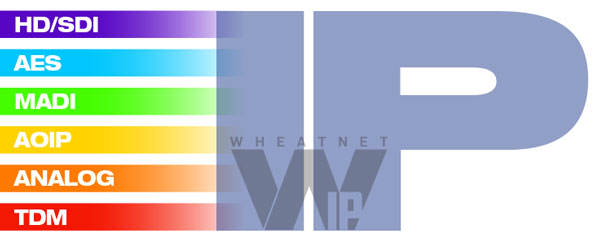 The transition to IP may be inevitable, but suffering is optional.
The transition to IP may be inevitable, but suffering is optional.
You could always start with a camera with IP output and an IP audio network, two simple additions that would join both video and audio in the IP realm so you’ll never have to step into the edit room again to embed AES audio into the video.
Those cameras are available today, as are audio over IP systems like WheatNet-IP. Simple changes like this can impact workflow now, and set you up for all the benefits of a total IP infrastructure later.
The transition to IP will take time, of course. And some thought. Here are four things that your friends at Wheatstone would like you to think about:
1. Think hybrid.
The ideal is a fully interoperable studio, where disparate systems and peripheral gear can talk to one another. Broadcast equipment manufacturers are working toward that goal, Wheatstone included, which is why our WheatNet-IP audio network is AES67 compatible. But until this and other interoperable standards are widely adopted, it’s important to be able to work with existing gear and systems. For many, this includes some MADI gear, some AES/EBU, some analog and some custom control interfacing to critical systems now used in the studio. For this reason, we’ve made it a priority to be able to ingest into our WheatNet-IP system virtually every audio format out there, including native analog, microphone, AES/EBU, SPDIF, IP audio, MADI and SDI.
2. Think beyond access. Think control.
IP connectivity isn’t just about access. It’s about control. The more logic you can put on the network, the more control you’ll have over change. For example, WheatNet-IP has an integrated control layer that carries all the logic functions for audio. This makes a world of difference when it comes to being able to handle the unexpected or to repurpose a news set for multiple productions. Control is built into each WheatNet-IP connection point that is shared with other IP connection points across the network, giving you access to not only all sources at once, but also the presets and any associated logic that go along with each feed for controlling such things as mic ON/OFF, or changing remote mic settings for IFB, processing and other parameters.
3. Think distributed network intelligence.
Centralized network management is a single-point-of-failure waiting to happen. Distributing network intelligence throughout to every IP point in the network is the smarter approach, because distributed networks like WheatNet-IP automatically build in redundancy - if one part of the network fails for any reason, the rest can keep on functioning. Each IP connection point – or BLADE – stores the entire configuration of the network onboard, which means that failover is immediate. And because WheatNet-IP BLADEs talk to each other, adding onto the network is plug-and-play for easy system expansion -- which in turn adds more control resources, audio mixing and processing tools, and more intelligence for whatever new services come along.
4. Think routable tools.
Having the right tools for the job is important. That’s why we place audio tools at all IP connection points in the WheatNet-IP audio network. For example, having two stereo 8x2 utility mixers at the point of I/O makes it practical to do online mixing of sounds, segue remotely between feeds, virtually overdub and pan, you name it. Just recently, we added audio processing to our I/O BLADEs as yet another routable tool in our audio toolkit. Adding new tools is possible because each of our I/O BLADEs has a CPU with operating system inside, which we can add to, change, and make to fit just about any scenario that’s needed.
Putting It All Together:
The WheatNet-IP System
Wheatstone manufactures an entire audio ecosystem of consoles, BLADEs, control panels, software - everything you need to get the performance you need for all of your applications.
The WheatNet-IP system's components include:

IP Mixing Consoles
WheatNet-IP is the control and audio routing network for Wheatstone Arcus, Strata, Virtual Strata, Series Four and Series Two digital mixing consoles.

Blade-4 TVE Mix Engine
WheatNet-IP capable digital mixing consoles interface to the network through the Blade-4 TVE Mix Engine.

BLADE I/O Access Units
BLADE I/O access units connect together in a distributed network topology with no single points of failure, and multiple points of recovery. Each BLADE has a CPU with OS and can route, mix, process, and control audio.
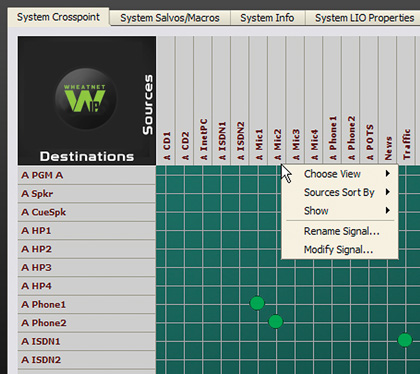
Network Components
WheatNet-IP is a complete network system, with navigation tools, switch panels, audio drivers and customized scripting. WheatNet-IP is AES67 compatible.

Production Automation Integration
WheatNet-IP talks IP to Grass Valley, Sony, Ross and other commonly used production automation systems. More than 60 technology partners or brands integrate seamlessly into the WheatNet-IP system.
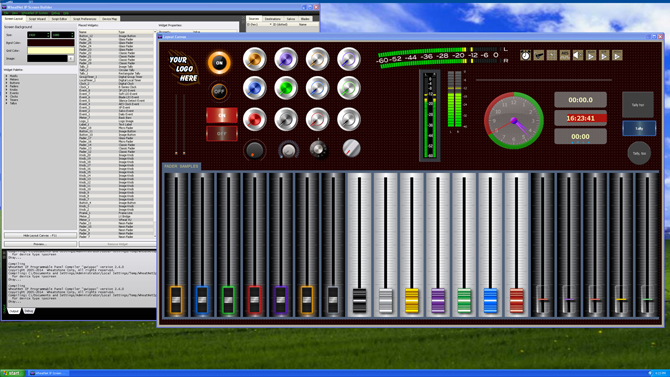
Network Design/Configuration
Design your WheatNet-IP system the way you want it now, and build onto it later with a variety of accessories and software modules. Use our Screen Builder appfor customizing your network using touch-screen devices or our IP meters wall of meters o monitor audio levels at all major points in the network.

